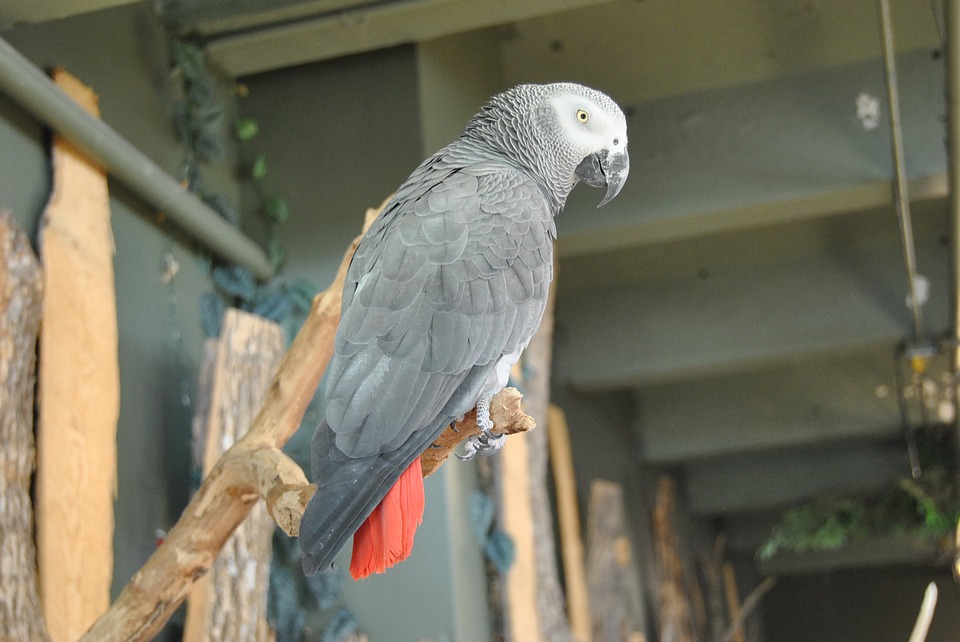Table of Contents
Where to get an African Grey? In terms of geographic range, the two known species have varying ranges. Congo African grey parrot inhabits a range extending from Kenya to the eastern border of the Ivory Coast while the Timneh African grey parrot has a range from eastern border of Ivory Coast to Guinea – Bissau. Where to get an African Grey? They make their nests in tree holes and makes seasonal movements out of the driest part of the region in the dry season. In this article, you’ll learn all about these wonderful birds and where to get an African Grey?
All About the Greys
Where to get an African Grey? These parrots typically measure 33 cm from head to tail and weigh up to 407 grams. They have an average wingspan of 46 – 52 cm. In terms of reproduction, the breeding season varies by locality but appears to coincide with the dry season. They breed once to twice a year.
Breeding
Breeding occurs in loose colonies with each pair occupying its own tree. Females lay three to five roundish eggs, one each at intervals of two to five days. Incubation takes about thirty days and the young emerge from the nest at approximately twelve weeks old. Both parents care for their clutch of young until they reach independence. In the wild, their average lifespan is 23 years, but in captivity, they last for forty five years, and can live up to sixty years! Now that’s for keeps!
Impressive Vocals
Wild African Grey parrots follow a daily pattern of vocalization; their impressive mimicry is also part of the fascinating facts about them, scientific studies have shown that they are able to make the connection mentally between words and their meanings, to express certain preferences and even to apply concepts such as color, shape and number.
A Vegetarian Breed
These birds are mostly herbivores. They feed primarily on nuts and fruits such as oil- palm, and supplemented by leafy matter, as well as insects and flowers.
African Grey parrots are vulnerable to terrestrial predators which makes them a near threatened species. They are the most popular avian pet in United States, Europe and Middle East.
Where to Get an African Grey: Breeder’s Choice
Where to get an African Grey? The first thing you need to do is to look for a legit avian breeder or pet store in your area that specializes in African greys. You can also find great avian breeders online but you have to take into consideration the validity of the breeder. It is highly recommended that you see your new bird in person before buying anything on the internet.
Interact with the Bird
Spend as much time as you can with your prospective new grey before you buying. Interact with the bird and see how it is with you. Continue the diet of the bird as advised by the store owner or breeder to maintain its eating habits. Look for any health problems or issues as well.
Banding
Make sure to only purchase an African Grey that is banded. Banding means the bird have a small metal band on one of its legs placed at birth by the breeder which is inscribed with the bird’s clutch number, date of birth and the breeder number. Leg bands are indicators that the purchaser and the bird itself are in the country legally and have not been smuggled.
Life Expectancy
African Greys can live for up to 45 years and more, these birds are long time companions, and its longevity depends on how your chosen breeders took care of them especially when they were just babies. Your African Grey will reach the fullest of its lifetime if on the onset you already chose a healthy breed. Some of the things you need to look out for when deciding where to get an African Grey and how includes; the bird is perky, active and alert; it should have bright and clear eyes; it should appear well groomed with neat feathers; the feathers should be mostly smoothed to the body at rest – not continually fluffed. The feet and legs should be smooth and free of lumps, scabs and rough scales. The bird is healthy is when it’s confident and inquisitive, although cautious and aware at the same time.
Where to Get an African Grey: Important Reminder
There would be instances that your pet will be out of its cage; after all, what’s the point of its beauty and intelligence if you won’t let it fly right? However, it’s also important to keep in mind on how to properly handle and train your Grey bird so that it will not cause harm to itself and to people as well.
Training an African Grey is not that hard to do, in fact it can be a fun and rewarding bonding experience for you and your feathered friend! Unlike any other bird, your Grey’s level of comprehension allows it to relatively absorb information very quickly and easily. Trust is the most important key in training your parrot. The first thing you need to do is to be able to establish a solid connection and rapport between you and your pet. We hope this article answered your question, where to get an African Grey? Stay tune for more posts!






 Author and long-time animal lover. Sharing knowledge on pet care through experience and the written word.
Author and long-time animal lover. Sharing knowledge on pet care through experience and the written word.